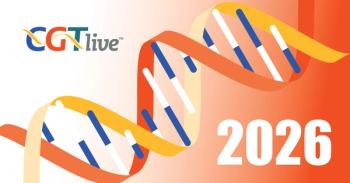
What Is the Optimal Maintenance Therapy in Advanced NSCLC?
A phase III trial found bevacizumab and pemetrexed were effective as a maintenance therapy, but researchers do not recommend it to treat non–small-cell lung cancer.
Both bevacizumab and pemetrexed were effective as maintenance therapy for advanced nonsquamous non–small-cell lung cancer (NSCLC), yet yielded higher toxicity, according to a new study
“National Comprehensive Cancer Network guidelines recommend pemetrexed, bevacizumab, or a combination of pemetrexed and bevacizumab as maintenance therapy for advanced NSCLC,” wrote study authors led by
The new ECOG-ACRIN 5508 study enrolled a total of 1,516 patients with advanced nonsquamous NSCLC, of whom 874 patients (57%) were progression-free after four cycles of carboplatin, paclitaxel and bevacizumab. Those patients were then randomized to receive maintenance therapy with either bevacizumab (287 patients), pemetrexed (294 patients), or the combination of both those agents (293 patients). Most of the cohort was white (87%), the groups had a median age between 63 and 65 years, and 11% of the patients never smoked.
After a median follow-up of 50.6 months, the three maintenance therapy arms had similar overall survival (OS) outcomes. The median OS from randomization was 15.9 months with pemetrexed, compared with 14.4 months with bevacizumab, for a hazard ratio (HR) of 0.86 (95% CI, 0.70–1.07; P = 0.12). The combination group had a median OS of 16.4 months, yielding an HR compared to bevacizumab of 0.90 (95% CI, 0.73–1.12; P = 0.28).
In the pemetrexed group the median progression-free survival (PFS) was 5.1 months, compared with 4.2 months with bevacizumab, for an HR of 0.85 (95% CI, 0.69–1.03; P = 0.06). The combination group had a median PFS of 7.5 months, which was significantly better than bevacizumab alone, with an HR of 0.67 (95% CI, 0.55–0.82; P < 0.001). Objective response rates during the maintenance phase in the bevacizumab, pemetrexed, and combination groups was 12.5%, 18.7%, and 21.2%, respectively.
The combination of bevacizumab and pemetrexed resulted in higher incidence of several adverse events compared with bevacizumab alone. These included anemia (P = 0.01), fatigue (P = 0.005), lymphopenia (P < 0.001), and others.
“Our results provide evidence that the outcomes are comparable between bevacizumab and pemetrexed, a proven agent in the maintenance therapy setting, from a clinical standpoint,” the authors concluded. They noted that the trial was initiated before targeted therapy or immunotherapy had been proven for first-line therapy in advanced NSCLC; to date, there is still limited information on the interactions between pemetrexed and immune checkpoint inhibition.
“It is clear that maintenance therapy will remain an integral part of the treatment approach to advanced nonsquamous NSCLC,” the authors wrote. “The results of ECOG-ACRIN 5508 support the use of either pemetrexed or bevacizumab as a single agent in this setting.”
Heather Wakelee, MD, of Stanford University Medical Center in California, told Cancer Network agreed the trial was very important when it was designed a decade ago, but there have been significant changes in this disease setting since then.
“We do not use switch maintenance any longer and so these results become less relevant,” she said. “This will not likely change practice.”
Newsletter
Stay at the forefront of cutting-edge science with CGT—your direct line to expert insights, breakthrough data, and real-time coverage of the latest advancements in cell and gene therapy.






























